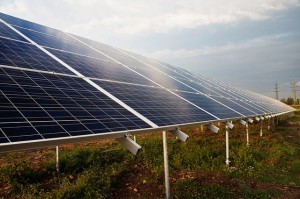Last week the New York Times reported that, for the first time in history, clean energy resources like solar and wind are becoming cost competitive with conventional coal in some markets. This paradigm shift, where clean energy is beginning to compete head-to-head with traditional energy sources, calls for a change in perspective.
This ‘change in perspective’ is a movement toward what I would describe as “sustainable sustainability” – in which “sustainable” means the ability to stand the test of time, and “sustainability” refers to an environmentally responsible approach to making, moving, and using energy. In other words, we must find a way to ensure clean energy resources remain competitive in the marketplace and become ‘business as usual’ resources in the overall energy mix. The International Energy Agency (IEA) does a great job of explaining the need for this shift:
In the classical approach, variable renewables are added to an existing system without considering all available options for adapting it as a whole. This approach misses the point. Integration is not simply about adding wind and solar on top of ‘business as usual’. We need to transform the system as a whole to do this cost-effectively.”
Sustainable, or environmentally beneficial, energy resources must be holistically integrated into the market – not placed in a set-aside – to compete with traditional fossil fuel resources. To do this, we must leverage existing market trends and reform antiquated rules that hinder progress toward a future in which clean energy makes up a significant portion of our electricity generation.
A New Paradigm Shift to Sustainable Sustainability
One way that we are already seeing a shift toward this new paradigm is in markets. Navigant Research predicts worldwide revenue from smart grid technologies is expected to grow from $44.1 billion in 2014 to $70.2 billion by 2023. Global corporations like Walmart, Google, IKEA, FedEx, Costco, and Johnson & Johnson are investing in renewable energy resources in a big way because it makes practical, financial sense. Other global tech companies – including Apple, Google, Samsung, and yes, even Airbnb – have all recently entered the smart home energy arena in a move that illustrates the profitability of the growing clean energy sector.
Financing clean energy projects has also become more affordable than ever before, and more accessible for a broader population. A recent ACEEE study found that energy efficiency is two to three times cheaper than traditional power sources. Solar and wind power are becoming cost-effective in many parts of the world, with one research firm boldly predicting that solar will become cost-competitive with natural gas by 2025. Likewise, demand response – an energy savings tool that pays people to shift their electricity use to times of day when there is less demand on the power grid or when more renewable energy is abundant – has proven to be a low- to no-cost option. Creative financing options like on-bill repayment, Property Accessed Clean Energy (PACE) programs, and green banks are responsible for some of this shift, but market penetration for previously novel energy technologies has also played an important role.
These changes illustrate that clean energy resources are becoming not only the environmentally preferable and sustainable choice, but the economically preferable one as well.
It would be tempting to assume we must only continue trending towards lower costs, better economics, and technological improvements – and that this is all we need to fully integrate sustainable energy resources into ‘business as usual.’ Unfortunately, however, it is not so simple.
Subsidies for the oil and gas industry still far outpace those for clean energy resources. IEA recently reported that internationally, “fossil fuels are reaping $550 billion a year in subsidies and holding back investment in cleaner forms of energy.” That’s around four times the amount renewables currently receive.
Compounding the issue, the legal system governing energy was created to regulate the types of power we had when those laws were enacted (i.e., traditional fossil fuel sources like coal). As the system has evolved to incorporate varied types of energy resources – from solar and wind power, to demand response, energy storage, and energy efficiency – regulations have been updated, but in no organized or consistent way.
Simply put, this goal of sustainable sustainability, where clean power has the opportunity to compete with traditional sources of power, is being inhibited because the rules of the game create an uneven playing field which puts clean energy resources at a disadvantage.
Examples are numerous. A recent court case, for instance, has prohibited demand response from participation in wholesale energy markets – a blow to not only environmental interests, but consumer pocketbooks as well. In 2013 alone, demand response saved people in the mid-Atlantic region $11.8 billion. Likewise, the Federal Energy Regulatory Commission does not include the cost of carbon emissions when calculating electricity rates, essentially requiring society to bear the devastating health and environmental costs. Even clean energy resources that are already installed are stymied. For example, a recent Brattle Group study found that already installed energy efficiency isn’t being accounted for in energy forecasts, which could be costing consumers $433 million a year.
Although it may not be surprising that the way energy is currently governed disadvantages sustainable resources, there is no reason for these resources to continue competing on an uneven playing field. Rather, with clean energy resources proving their competitive edge, there is every reason to do the opposite. Sustainable sustainability should be the goal of regulators and lawmakers, with updated and amended regulations and laws suited for the present and future, rather than the past. Without this evolution, a future in which sustainable resources are themselves sustainable, secure investments will be impeded.
By
Originally Published on December 1, 2014
The Energy Exchange Blog is a forum where EDF‘s energy experts discuss how to accelerate the transition to a clean, low-carbon energy economy. Follow them on Twitter here: @EDFEnergyEX

